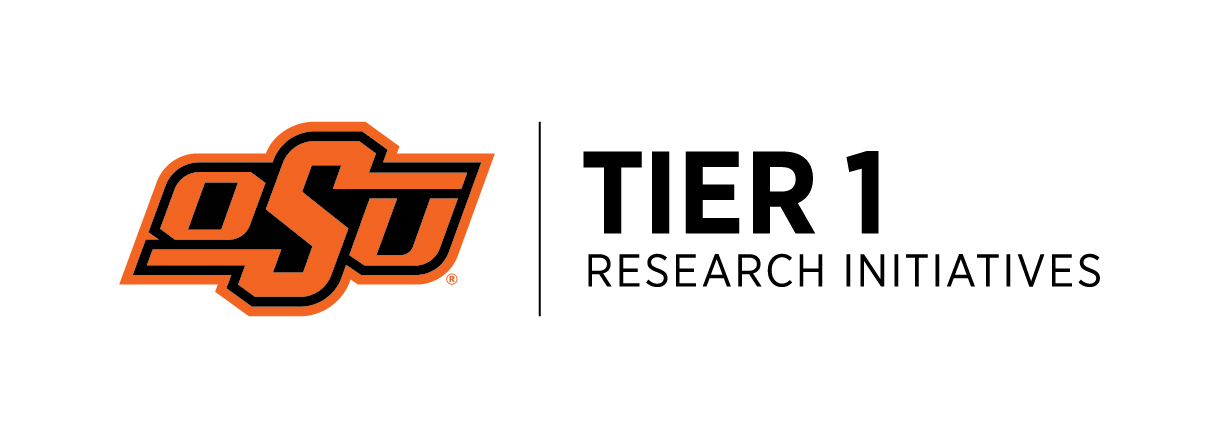
OSU’s strategic research initiatives emerge to address societal challenges
Monday, September 16, 2019
Oklahoma State University has designated four research areas for focused investment and growth in the coming years, based upon the compelling societal needs that are being addressed.
These new programs, selected through a competitive 15-month process, are collectively being labeled Tier 1 Research Initiatives (Timely, Impactful, Engaged Research).

“OSU’s research has always reflected our land-grant mission to serve society,” President Burns Hargis said at the launch of the competition. “Our Tier 1 Research Initiatives represent a commitment to Oklahoma that we intend to use our research strengths to make a major difference.”
OSU Vice President for Research Dr. Kenneth Sewell considers the entire process a great success for advancing interdisciplinary research across OSU.
"We have amazing researchers all across the spectrum of academic departments and disciplines at OSU,” Sewell said. “That’s why OSU is among the nation’s top tier of research universities, according to the Carnegie classifications. Over 20 different faculty teams submitted ideas during the competition, and while we are currently moving forward with only four of these, the competition spurred a great deal of interdisciplinary partnerships that we believe will further elevate the overall research culture at OSU.”
Two existing research centers were designated Tier 1 Research Initiatives in the first phase based on the public impact of their missions, and two other areas of research were designated during the second phase of the universitywide competition.
| 1st Column | 2nd Column |
|---|---|
|
|
The Drone Initiative: Drones in Service of Public Health and Safety The Drone Initiative is a part of OSU’s Unmanned Systems Research Institute (USRI). “Drones are becoming commonplace in how we think about national defense, law enforcement, and even for the future of retail,” said USRI Director Jamey Jacob. “But the potential for drones to make positive contributions in health and safety is vast yet under-developed.” Led by engineering faculty with collaborators from multiple colleges and schools across the institution, this initiative develops applications, tools and aircraft platforms so that unmanned aerial vehicles can improve weather forecasting, environmental monitoring, firefighting and other health and safety arenas. |
| 1st Column | 2nd Column |
|---|---|
|
|
The Opioid Initiative: The Research Arm of the Center for Wellness and Recovery Based at the OSU Center for Health Sciences (OSU-CHS) in Tulsa, this initiative is led by researchers spanning multiple disciplines at OSU-Stillwater, OSU-Tulsa, and OSU-CHS. The initiative focuses on understanding the causes, effects and effective interventions for opioid addiction — a major public health crisis in Oklahoma and elsewhere. “Addressing the opioid crisis with science-driven tools is the ultimate goal,” said Charles Amlaner, OSU-CHS vice president for research. “And we are excited to have OSU-CHS lead this collaboration with our OSU colleagues.” |
 |
The Microbiome Initiative: Connecting the Microbiome to Health Outcomes The complexity of the microbiome is vast, and the connections between these complex biological communities inside humans, animals and even the soil have the potential to benefit health and well-being. But rigorous science is required to ensure that medical, veterinary, dietary and soil-management interventions targeting the microbiome are effective and well-understood. This initiative brings together OSU experts from biology, human and veterinary medicine, computer science, mathematics, behavioral sciences, social science and engineering to better understand microbiome-associated diseases and processes that affect health. |
| 1st Column | 2nd Column |
|---|---|
|
|
The Rural Initiative: Ensuring the Future of Rural Communities The future of many rural communities in Oklahoma, as well as elsewhere in the U.S. and around the world, is jeopardized by natural resource degradation, climate change, drought and sociocultural trends. Those threats are draining human talent, expanding a technology gap between rural and urban society, and leading to rural population losses. This initiative will identify and create ways to enhance the natural, human and technological capital in rural areas by bringing together interdisciplinary research teams to conduct community engaged, solution-oriented research. The resulting solutions are likely to have global applicability. Research experts from agricultural disciplines, engineering, entrepreneurship and rural health at OSU-CHS will implement an innovative approach to the “brain drain” in rural America. |
These teams will be supported by OSU and OSU-CHS in a variety of ways, including center support, strategic hires, seed funds, laboratory equipment for new hires, student and staff support, and assistance in seeking external grants and partnerships. Donors will also have the opportunity to provide scholarships to undergraduate and graduate students conducting research in these areas.
“Many of the faculty driving our Tier 1 Research Initiatives are among OSU’s most productive experts,” Sewell said. “They will leverage OSU’s investments to bring in resources from federal agencies, foundations and community partners, accelerating OSU’s impact on these important problems.”
For additional information about OSU’s Tier 1 Research Initiatives, visit okla.st/tier1
MEDIA CONTACT: Harrison Hill | Research Communication Specialist | 405-744-5827 | harrison.c.hill@okstate.edu



